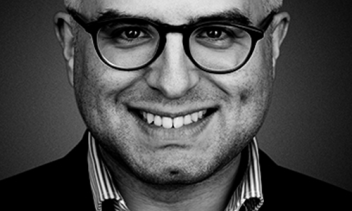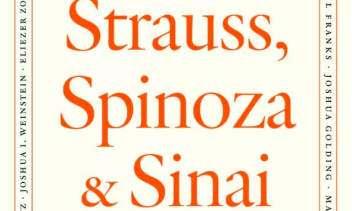The belief that when we peel away cultural encrustations we will arrive at the essence of a tradition or a culture assumes that whatever was there at the beginning was pure, and all later additions or amendments are corrupting, or are sidetracks.… To paraphrase a metaphor Wittgenstein used in another context: we may peel away the leaves to try to get at the essence of the artichoke, and find that the leaves were what the artichoke was about.
– John Garvey, Leaves of the Artichoke: The Marriage of Religion and Culture
People have been trying to make sense of things for quite a long time. Humanity has tried to make sense of life, has tried to make sense of the making sense of life, and then of course has continued to try to make sense of that in an ever unfolding (or is it infolding?) experiment in the limits and opportunities of cognition that is human history. Over the relatively short history of humanity on earth, we have increasingly turned our attention towards better understanding the so-called ‘human condition’ in an attempt at finally making sense of it all, or at least some small corner of it all. It is this big beautiful Fabergé egg of sense-finding that we are here to think about.
The rational instinct has a long and deeply tangled history with the religious instinct in particular, as the two modes of meaning-making have drawn from and against each other. In today’s world, we sometimes see the rational as the enemy of the religious, but history shows a far more complex picture. For millennia, making sense of something and making meaning from something have occupied overlapping and even interdependent positions. As Garvey points out (in the quote above), our thinking about what constitutes the ‘true’ essence of a religious culture, and that which constitutes the detritus or buildup, is a complex and oft-misleading endeavor. Sometimes, the leaves of the artichoke are in fact the essence of the artichoke, and God was in the kiddush club the whole time.
As we explore the limits and lessons of rationality, we are looking back at history, and thinking more about the ways we think, from the beginning until today. Jump along, and let’s think about thinking, together.
Biblical Era
Where does the rational instinct begin? We’ve got to get ourselves back to the garden, as people wiser than us have put it, and so we turn to Bereishis 2:9: “And from the ground God caused to grow every tree that was pleasing to the sight and good for food, with the tree of life in the middle of the garden, and the tree of knowledge of good and bad.” The Tree of Knowledge, forbidden to taste, separate from the Tree of Life, a division that was sure to get us in trouble quickly. We humans never were too comfortable with knowledge and life occupying completely separate domains; not for nothing does a Jewish tradition note that the two trees shared one set of common roots (see Rabbeinu Bachya for more on this fun claim!). Later on, in Bereishis 4:25, we find this taken further: “Adam knew his wife again,” in a reflection of the timeless truth that knowledge and the very messiest parts of life share far more than we like to openly admit. Later, we find Avraham (then Avram still) portrayed in a Midrashic legend seeking God through an inquiry that we can think of as rational, in a rationalism that is deeply embodied in the existential:
“G-d said to Abram, ‘Go forth from your land…'” (Genesis 12:1) Rabbi Yitzchak opened: “Listen, daughter, look, and incline your ear, and forget your people and your father’s house.” (Psalms 45:11) Rabbi Yitzchak said: this may be compared to a man who was traveling from place to place when he saw a castle aglow. He said, “Is it possible that this castle lacks a person to look after it?” The owner of the building looked at him and said to him, ‘I am the master of the castle.'” What happened with Abraham our father was similar. He said, “Is it possible that this universe lacks a person to look after it?,” the Holy Blessed One looked at him and said to him, ‘I am the Master of the Universe.'”
Where would we be if Avraham never asked the question, risking everything he knew and loved in the process? Where would we be without the instinct and urge to take dangerous jumps into the uncharted waters of the rational? Perhaps faith, too, is a child of rationality, in its own way. Please don’t hate me too much for saying this, blame the negroni for any wrongdoing in this article. But knowing the Torah like we do, we know by now that the Divine Author is far too wise to give us readers any one philosophy or system too easily, and we find as many invitations towards wisdom as we do warnings about the dangers of wisdom in the literary afterlives of the Torah. From the wisdom of Mishlei to the post-wisdom wisdom of Kohelet, the Torah has far more faces than we will ever appreciate. This too is wisdom.
Talmudic Era
The rationality of the Talmud is a complex issue. The very word Talmudic, in our contemporary idiom, speaks to the paradoxical rationality at hand (according to dictionary.com: “characterized by or making extremely fine distinctions; overly detailed or subtle; hairsplitting.”). On the one hand, the Talmud endorses a fine rationality and we find endless comments predicated on the rationality of the Torah, a rationality of the Torah that is shocking to first-time readers and long-time learners alike.
The Talmud can’t quite be boxed into any one box, and the dizzying interests of the sages meander through science, theology, botany, medicine, philosophy, and law (and law and law and law), explicating and articulating their way towards the Judaism that we know and love today. Calling the Talmud rational—or purely rational—is challenging, although it certainly demonstrates a radical rationality within the closed narrative of its construction, and thus calling the Talmud pre-rational or post-rational or meta-rational is also wrong. Some of this touches upon the very heady question of what rationality really is and what it means for a religion or religious culture to really be rational as such. Rav Adin Steinsaltz, the great Talmudist, educator, and philosopher put it better than we can. Let’s let him speak:
“It was a big mistake to make the education in Israel based so much on the Bible,” Steinsaltz says, in between puffs of his pipe. “Because the Bible was written by prophets. If you read the Bible, you somehow become in your mind a little prophet. That’s the way in which Israelis speak to each other — they don’t have conversations, they all have complete and unlimited knowledge. Learning Talmud would bring a big change to the Israeli mind, because it deals with and is connected to dialectic.”
There you have it, folks.
Medieval Era
Rationality speaking, this is where the story gets interesting. With the emergence of Aristotelianism, along with Neoplanatism (for a good time, try saying this after a couple of shots), particularly through the rediscovery of Greek thought through Muslim thinkers, Jewish philosophy all of a sudden had a lot to contend with. Rabbeinu Saadia Gaon starts us off with his Emunot V’Deot, a groundbreaking work that takes the whole beautiful mess of Jewish texts and develops a framework of Faiths and Doctrines from it all, structuring Jewish thought into a comprehensive system of thought. In this era, we find Yehuda Halevi, in his Kuzari, articulates a sophisticated and sincere reasoning behind the set of beliefs that he sees as fundamental to the Torah. And then of course there is the Rambam. Moshe Maimonides, affectionately known as the Rambam, took rationality as a serious endeavor with which to think through Jewish ideas, particularly in his timeless Guide to the Perplexed. Rationality was hotly contested during these years, as the esoteric circles that studied Kabbalah and the philosophically minded rationalists engaged in heady debates about God, the Torah, and so much more. Who won these wars? Many would say the mystics, but as battles between all great ideas go, it’s far from simple. (Say hi and let me know who you think won at yehudafogel1@gmail.com!)
Modern Era
Ok, I know that we said that these questions were hotly debated in the medieval era—and that was true—but it becomes even more fun here, I promise. The modern era brings us Spinoza, the excommunicated Portuguese Jewish polymath and thinker, who had a hand in launching all of Western philosophy hurtling towards what we have today. Along with Spinoza, the Enlightenment, emancipation from the Ghetto, Sabbateanism, and the births of Reform and Orthodoxy as such, as well as Chassidus and Misnagdus, were all battles in some way or another about rationality, as often-opposing sides came to words over the question about what makes sense, how much sense things should make, and how we can determine sense itself. All these hot questions coalesced and hardened into the modern consciousness that we have today, in the liquid modernity that courses through our veins. We are all products of all of these debates, all of these controversies and exercises in thought.
Contemporary Era
That brings us to today. By now, we are all post-rationality in several ways. On the one hand, in the world after the blogosphere, many eager Jewish students are well aware of the long history of Rationalist Judaism, and we live in an age where questions, doubt, and skepticism have more of a place than they have had before. On the other hand, we also live in a time in which the Jewish community at large has grown increasingly open, interested, and engaged in a spiritual reckoning with its own identity, and the pendulum swing towards mysticism and spiritual experience bespeak a different sort of post-rationality. The reason and revelation of medieval Judaism have become the authenticity of personal revelation as well, in the postmodern ethos alive and thriving in many corners of the contemporary Jewish mind. So what do we make of all of this, the rationality and the post-rationality, the mysticism and the mysteries of it all? Let’s keep our eyes, hearts, and minds open, and see what happens, together.







